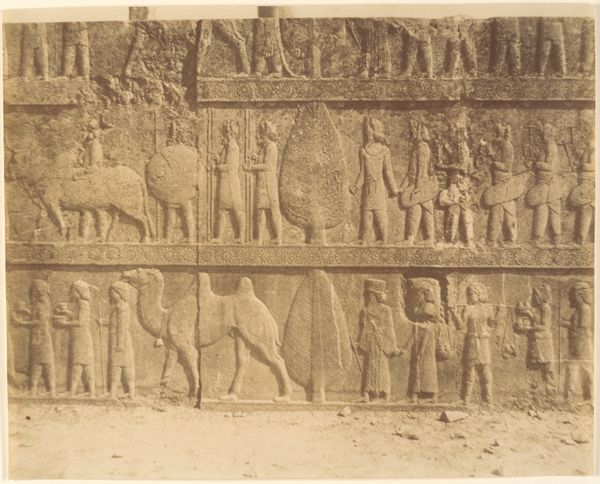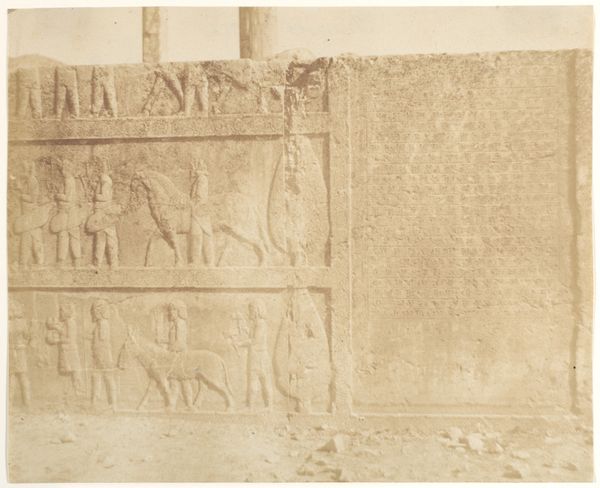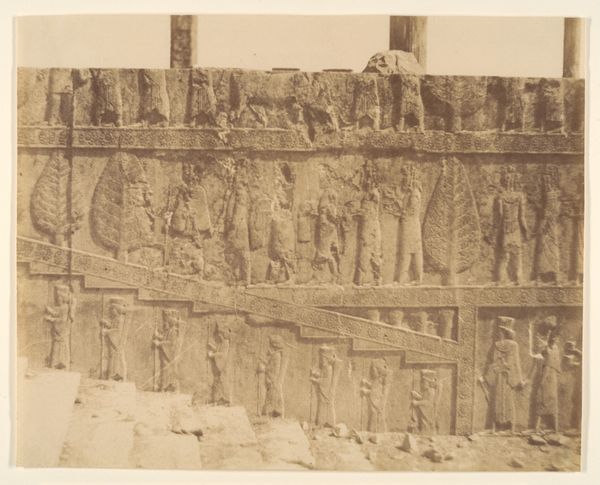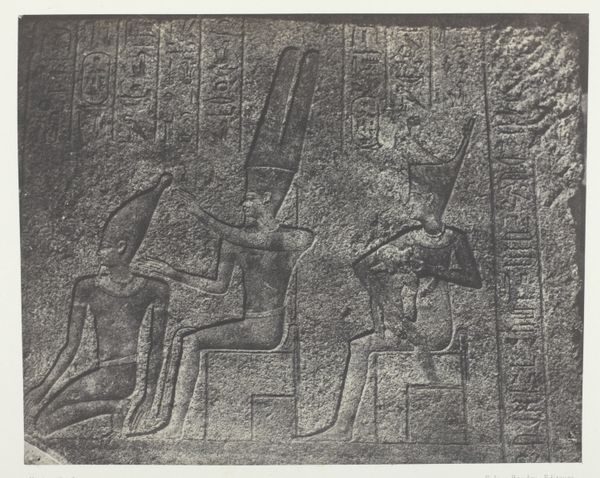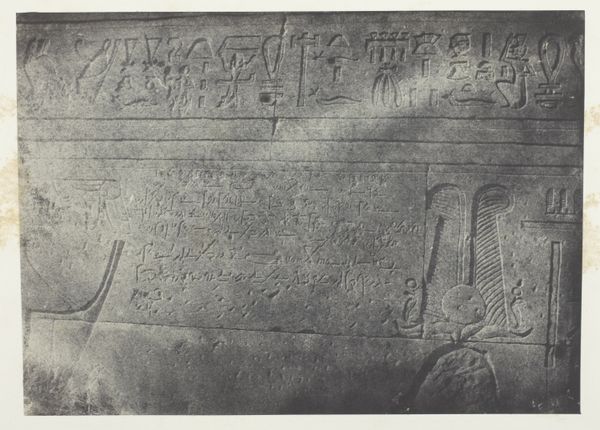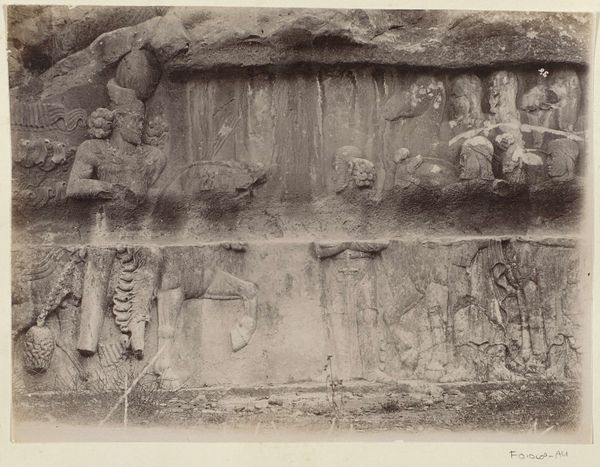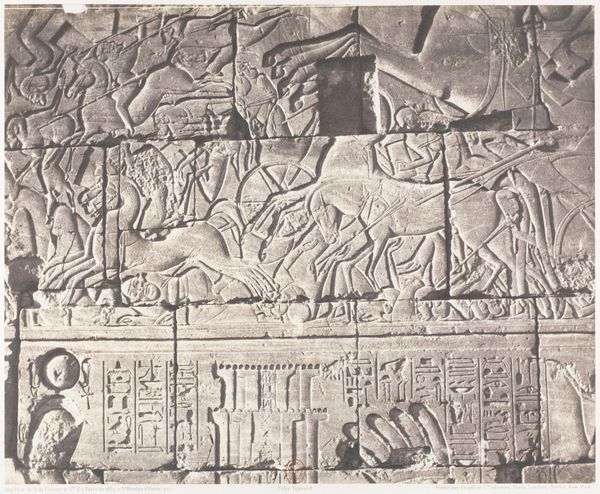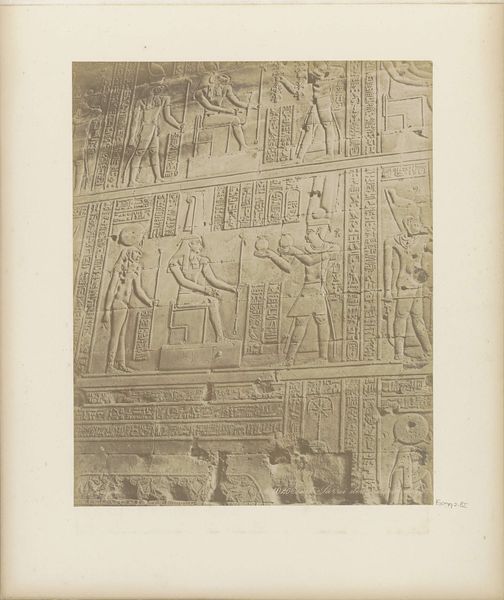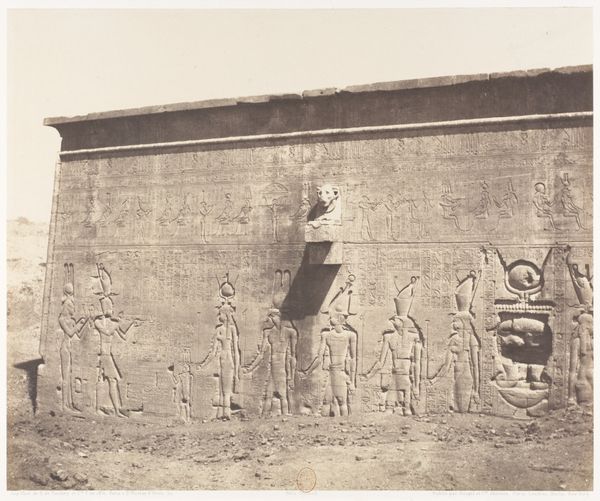
Detail van een bas-reliëf nabij de ruïnes van het paleis van Darius, Persepolis, Perzië Possibly 1925
0:00
0:00
carving, relief, sculpture
#
carving
#
narrative-art
#
sculpture
#
relief
#
figuration
#
carved into stone
#
ancient-mediterranean
#
sculpture
#
islamic-art
#
statue
Dimensions: height 84 mm, width 144 mm, height 124 mm, width 184 mm
Copyright: Rijks Museum: Open Domain
This is a photograph taken by A.G.A. van Eelde of a bas-relief near the ruins of the palace of Darius in Persepolis, Persia. The relief is carved into stone, likely limestone, a material chosen for its relative softness, which made it easier to carve, yet durable enough to withstand the test of time. The stone's inherent qualities of texture and weight lend a sense of permanence to the artwork. The carving process, achieved with tools such as chisels and mallets, would have been labor-intensive, requiring skilled artisans to meticulously remove material, shaping the figures and forms. The relief's creation reflects the socio-cultural context of its time, symbolizing the power and authority of the Persian empire. The images of people and animals are visual testimonies that highlight the significance of skilled traditions in this creative practice, which straddles the line between craft and fine arts. Ultimately, the material and processes involved in the making of this relief are crucial to understanding its full meaning and impact.
Comments
No comments
Be the first to comment and join the conversation on the ultimate creative platform.
